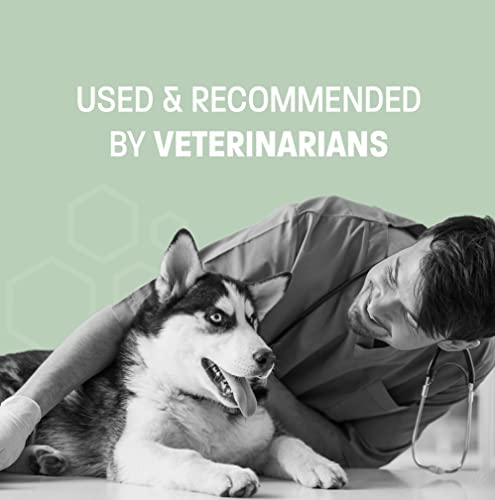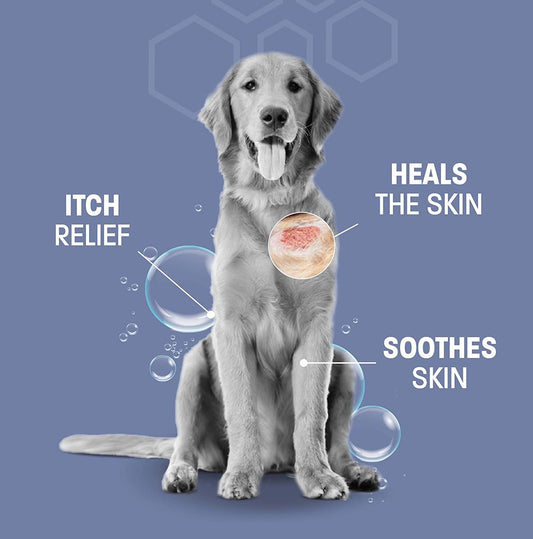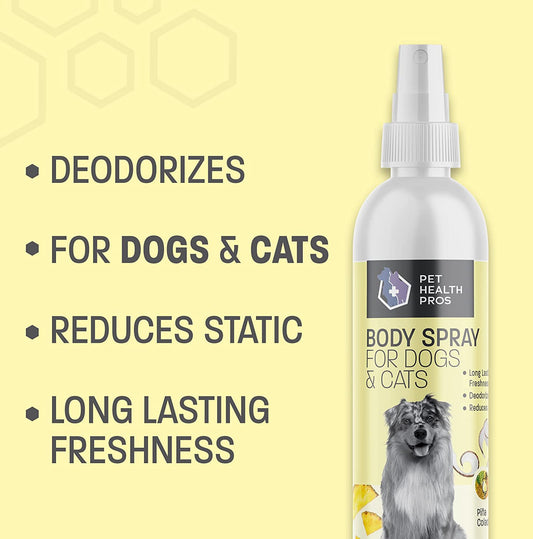If you're a cat owner, you know how important it is to keep your furry friend safe from pesky parasites like fleas and ticks. One popular option is Bravecto for cats, a treatment that promises long-lasting protection. In this article, we'll break down everything you need to know about Bravecto, including how it works, its benefits, and how to use it effectively.
Key Takeaways
- Bravecto for cats provides up to 12 weeks of protection against fleas and ticks.
- It's available in easy-to-administer forms, making it convenient for pet owners.
- Most cats tolerate Bravecto well, but some may experience mild side effects.
- Always consult your veterinarian before starting any new treatment for your cat.
- Bravecto can be combined with other medications, but check with your vet first.
Understanding Bravecto For Cats
What Is Bravecto?
Bravecto is a brand name for a medication that contains the active ingredient fluralaner. It's primarily used for the treatment and prevention of flea and tick infestations in cats. Unlike some older treatments, Bravecto offers a longer duration of protection with a single dose. It's available in different formulations, including topical solutions and chewable tablets (though the chewable form is not available for cats).
How Does Bravecto Work?
Bravecto works by interfering with the nervous system of fleas and ticks. Fluralaner, the active ingredient, is an isoxazoline that inhibits the function of the arthropod nervous system by acting on ligand-gated chloride channels (GABA-receptors and glutamate-receptors). This disruption leads to uncontrolled activity of the nervous system and subsequent death of the parasite. The medication is absorbed into the cat's system, and when fleas or ticks feed on the cat, they ingest the fluralaner and are killed. This systemic action means that the parasite doesn't have to bite very much to be exposed to the drug.
Types Of Parasites Treated
Bravecto is effective against several types of external parasites that commonly affect cats. Here's a breakdown:
- Fleas: Bravecto is highly effective in killing adult fleas and is indicated for the treatment and prevention of flea infestations.
- Ticks: It is also effective against several tick species, including black-legged ticks (Ixodes scapularis) and American dog ticks (Dermacentor variabilis). The specific tick species covered can vary depending on the formulation and regional regulations, so it's always good to check the product label.
- Ear Mites: While Bravecto's primary use is for fleas and ticks, some formulations may also aid in the treatment of ear mites. Always consult with your vet to confirm if the specific product you're using is suitable for ear mites.
It's important to note that while Bravecto is effective against these parasites, it does not prevent them from attaching to your cat. Instead, it kills them after they've started feeding. This can still help reduce the risk of disease transmission, as the parasites are eliminated quickly. Always follow your veterinarian's advice on the best parasite prevention strategy for your cat, considering their lifestyle and risk factors. You can also ask your vet about flea and tick prevention.
Benefits Of Using Bravecto For Cats
Long-Lasting Protection
One of the biggest advantages of Bravecto is its extended duration of action. Unlike many other flea and tick treatments that require monthly application, Bravecto provides protection for up to 12 weeks with a single dose. This can be a real game-changer for busy pet owners who sometimes forget monthly treatments. It also means fewer applications for your cat, which many cats appreciate!
Convenient Dosing
Bravecto is designed with convenience in mind. It comes in a chewable tablet form (for some formulations) or as a topical solution, making it relatively easy to administer.
- Chewable tablets can be given like a treat.
- Topical solutions are applied to the back of the neck.
- The extended dosing interval further adds to the convenience.
Safety Profile
Bravecto has undergone extensive testing to ensure it's safe for cats when used as directed. While, like all medications, it can have potential side effects, serious reactions are rare. It's always a good idea to discuss your cat's health history with your vet before starting any new medication, but Bravecto is generally considered a safe and effective option for flea and tick prevention in cats.
It's important to note that while Bravecto is generally safe, it's not suitable for kittens under 6 months of age or cats that weigh less than 2.6 pounds. Always follow your veterinarian's instructions and read the product label carefully before administering Bravecto to your cat.
How To Administer Bravecto For Cats
Dosing Instructions
Okay, so you've got your Bravecto, and now it's time to give it to your cat. The dosage is based on your cat's weight, so it's important to get that right. You can find the specific dosing information on the product packaging or from your vet. Make sure you read it carefully!
Administration Methods
Bravecto for cats usually comes as a topical solution, which means you apply it to their skin. Here's the deal:
- Find the spot at the base of your cat's neck where they can't reach to lick it off. This is key!
- Part the fur so you can see the skin.
- Squeeze the entire tube of Bravecto onto that spot. Try to get it all in one go.
It can be a bit tricky if your cat is squirmy, but try to be quick and efficient. Maybe have a treat ready for afterwards as a reward.
What To Do If A Dose Is Missed
Missing a dose happens, so don't panic. Bravecto is designed to last for a while, but here's what I'd do:
- If you realize it within a day or two of when you were supposed to give it, go ahead and apply it then.
- If it's been longer than that, just wait until the next scheduled dose. Don't double up!
- Keep an eye on your cat for any signs of fleas or ticks in the meantime. If you're worried, give your vet a call.
It's always a good idea to keep a record of when you give your cat Bravecto, so you don't accidentally miss a dose or give it too soon. I just use a simple calendar, and it works great.
Potential Side Effects Of Bravecto For Cats
It's good to know what could happen when you give your cat Bravecto. Most cats do just fine, but like any medication, there's a chance of side effects. Knowing what to look for can help you keep your kitty safe and healthy.
Common Side Effects
Okay, so what are the usual suspects? Some cats might experience:
- Vomiting
- Diarrhea
- Lethargy or decreased appetite
- Skin reactions at the application site (if using the topical version)
These side effects are generally mild and don't last long. Usually, they clear up on their own in a day or two. But, it's still worth keeping an eye on your cat.
Serious Reactions
While rare, some cats can have more serious reactions. These need immediate attention. Watch out for:
- Seizures
- Muscle tremors
- Difficulty walking or standing
- Changes in behavior (like extreme agitation or disorientation)
If you see any of these signs, don't wait. Call your vet right away. It's always better to be safe than sorry.
When To Contact A Veterinarian
So, when should you actually pick up the phone? Here's a simple guide:
- If your cat has any side effects that last longer than 48 hours.
- If the side effects seem to be getting worse instead of better.
- If you notice any of the serious reactions mentioned above.
Basically, if anything seems off or you're just worried, give your vet a call. They know your cat and can give you the best advice. Plus, they can rule out any other potential problems.
Bravecto For Cats: Frequently Asked Questions
Is Bravecto Safe For All Cats?
Generally, Bravecto is considered safe for most cats, but there are exceptions. It's not recommended for kittens under 6 months old or cats that weigh less than 2.6 pounds. Pregnant or lactating cats should also avoid it unless specifically advised by a vet. Always check with your veterinarian before starting any new medication to ensure it's appropriate for your cat's individual health status.
Can Bravecto Be Used With Other Medications?
It's important to discuss all medications your cat is currently taking with your vet before starting Bravecto. While Bravecto is often safe to use with other medications, there's always a potential for interactions. Your vet can assess the specific combinations and advise you accordingly. To be safe, make sure your vet has a complete picture of your cat's health and current treatments.
What Should I Do If My Cat Refuses The Treatment?
If your cat refuses Bravecto, don't force it. Bravecto for cats typically comes as a topical solution, but some cats can be really difficult. Here are a few tips:
- Try applying it when your cat is relaxed, maybe after a meal or during a cuddle session.
- Make sure you apply it to the base of the neck where they can't reach to lick it off.
- If they still resist, contact your vet. They might have alternative methods or treatments to suggest.
It's important to ensure your cat receives the correct dose for effective flea and tick control, so don't give up, but don't stress your cat out either. Your vet is your best resource for finding a solution that works for both of you.
Comparing Bravecto With Other Flea Treatments
Bravecto vs. Topical Treatments
When it comes to flea control for your cat, you have options. Bravecto stands out because it's an oral treatment, offering a different approach compared to topical solutions. Topical treatments are applied directly to your cat's skin, usually at the back of their neck to prevent them from licking it off.
Here's a quick rundown:
- Application: Topical treatments require careful application to the skin, while Bravecto is given orally.
- Mess: Some topical treatments can leave a greasy residue on your cat's fur.
- Wash-off Risk: Topicals can wash off if your cat gets wet soon after application, reducing their effectiveness.
- Contact: There's a risk of the treatment rubbing off on furniture or people who pet the cat.
Bravecto eliminates these concerns, as it works from the inside out. Once ingested, the medication is absorbed into your cat's bloodstream, providing protection without the mess or risk of wash-off.
Bravecto vs. Oral Medications
Bravecto isn't the only oral flea treatment available for cats, but it does have some distinct advantages. Other oral medications often require more frequent dosing, sometimes even daily, to maintain effective flea control. Bravecto, on the other hand, provides protection for up to 12 weeks with a single dose. This can be a huge benefit for cat owners who have trouble remembering to give medication frequently or who have cats that are difficult to pill.
Consider these points:
- Dosing Frequency: Bravecto's extended protection reduces the need for frequent dosing.
- Ease of Use: A single dose every 12 weeks can be easier to manage than monthly or daily treatments.
- Compliance: Less frequent dosing can improve compliance, ensuring your cat receives consistent protection.
Cost Comparison
Cost is always a factor when choosing a flea treatment for your cat. While the initial cost of Bravecto might seem higher than some other options, it's important to consider the long-term value. Because Bravecto only needs to be administered every 12 weeks, you'll purchase it less often than monthly topical treatments or more frequent oral medications.
Here's a general idea:
| Treatment Type | Dosing Frequency | Approximate Cost Per Dose | Cost Over 12 Months |
|---|---|---|---|
| Bravecto | Every 12 weeks | $45 | $135 |
| Monthly Topical | Monthly | $20 | $240 |
| Daily Oral Medication | Daily | $2 | $730 |
Over a year, the total cost of Bravecto can be competitive, and in some cases, even lower than other treatments, especially when you factor in the convenience and reduced effort of less frequent dosing. Always check with your vet for the most accurate pricing in your area.
Consulting Your Veterinarian About Bravecto For Cats
When To Discuss Bravecto
Okay, so you're thinking about Bravecto for your cat. That's great! But before you rush into anything, it's a good idea to have a chat with your vet. I usually bring it up during my cat's regular check-up. It's the perfect time to ask about flea and tick prevention in general. Your vet can assess your cat's specific risk factors, like whether they go outside or if you have other pets that might bring pests in. Also, if your cat has any existing health issues, like allergies or a sensitive stomach, definitely mention that. Your vet can help you decide if Bravecto is the right choice, or if there's a better option out there.
Preparing For Your Vet Visit
To make the most of your vet appointment, jot down a few notes beforehand. It sounds simple, but it helps! Here's what I usually do:
- Write down any symptoms you've noticed in your cat, like excessive scratching or signs of fleas.
- List any medications or supplements your cat is currently taking. This is super important to avoid any bad interactions.
- Think about your cat's lifestyle. Does she go outside? Does she interact with other animals? The more info, the better.
Having all this information ready will help your vet give you the best advice. Plus, it shows you're a responsible pet owner, which never hurts!
Understanding Your Cat's Health Needs
Every cat is different, and what works for one might not work for another. Your vet can help you understand your cat's unique health needs and create a flea and tick prevention plan that's just right for them. This might include Bravecto, but it could also involve other treatments or a combination of approaches. The goal is to keep your cat healthy and comfortable, and your vet is the best person to guide you through that process. Don't be afraid to ask questions and voice any concerns you have. After all, you know your cat best!
Before giving your cat Bravecto, it's important to talk to your veterinarian. They can help you understand if this treatment is right for your pet and answer any questions you might have. If you want to learn more about Bravecto and how it can help your cat, visit our website for more information!
Final Thoughts on Bravecto for Cats
In summary, Bravecto can be a great option for keeping your cat safe from fleas and ticks. It’s easy to use and lasts a long time, which is a big plus for busy pet owners. Just remember to follow the instructions carefully and consult your vet if you have any concerns. Regular check-ups are important too, so your cat stays healthy and happy. Overall, if you’re looking for a reliable way to protect your feline friend, Bravecto is definitely worth considering.
Frequently Asked Questions
Is Bravecto safe for all cats?
Bravecto is generally safe for most cats. However, it's important to consult your veterinarian before starting any new medication, especially for kittens or cats with health issues.
Can I use Bravecto with other medications?
Yes, Bravecto can usually be used with other medications. But, it's best to check with your vet to avoid any potential interactions.
What should I do if my cat refuses the treatment?
If your cat refuses Bravecto, try offering it again later. You can also talk to your vet for tips on making it more appealing or for alternative treatments.
How quickly does Bravecto work?
Bravecto starts to work quickly, usually within a few hours, to kill fleas and ticks. Full protection lasts for up to three months.
Are there any side effects I should watch for?
Some cats may experience mild side effects like vomiting or diarrhea. If you notice any serious reactions, contact your veterinarian right away.
Can Bravecto be used on pregnant or nursing cats?
It's best to avoid using Bravecto on pregnant or nursing cats unless your vet says it's safe. Always consult your veterinarian first.








